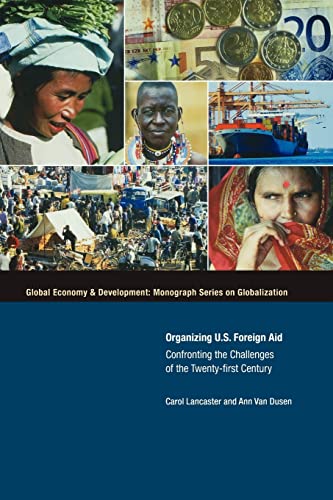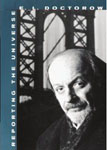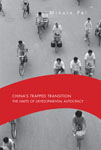Book Details

FOREIGN ATTACHMENTS : THE POWER OF ETHNIC GROUPS IN THE MAKING OF AMERICAN FOREIGN POLICY
ISBN 9780674002944
Pages 224
Year 2000
Edition 1
Publisher HARVARD UNIVERSITY PRESS
Subject POLITICAL SCIENCE
Description
Description
For Fluid Mechanics courses found in Civil and Environmental, General Engineering, and Engineering Technology and Industrial Management departments.
Fluid Mechanics provides a comprehensive and well-illustrated introduction to the theory and application of Fluid Mechanics. The text presents a commitment to the development of student problem-solving skills and features many of the same pedagogical aids unique to Hibbeler texts.
MasteringEngineering for Fluid Mechanics is a total learning package that is designed to improve results through personalized learning. This innovative online program emulates the instructor’s office—hour environment, guiding students through engineering concepts from Fluid Mechanics with self-paced individualized coaching.
Teaching and Learning Experience
This program will provide a better teaching and learning experience–for you and your students. It provides:
Individualized Coaching: MasteringEngineering provides students with wrong-answer specific feedback and hints as they work through tutorial homework problems.
Problem Solving: A large variety of problem types stress practical, realistic situations encountered in professional practice, with varying levels of difficulty.
Visualization: The photos are designed to help students visualize difficult concepts.
Review and Student Support:A thorough end-of-chapter review provides students with a concise reviewing tool.
Accuracy Checking:The accuracy of the text and problem solutions has been thoroughly checked by other parties.
Alternative Coverage: After covering the basic principles in Chapters 1-6, the remaining chapters may be presented in any sequence, without the loss of continuity.
About Author(s)
Tony Smith is Cornelia M. Jackson Professor of Political Science at Tufts University.
Content
Table of Contents
FLUID MECHANICS R.C. Hibbeler
TABLE OF CONTENTS
Chapter 1
Fundamental Concepts
1-1. Introduction
1-2. Characteristics of Matter
1-3. Systems of Units
1-4. Calculations
1-5. Problem Solving
1-6. Basic Fluid Properties
1-7. Viscosity
1-8 Viscosity Measurement
1-9. Vapor Pressure
1-10. Surface Tension and Capillarity
Chapter 2
Fluid Statics
2—1. Pressure
2-2. Absolute and Gage Pressure
2-3. Static Pressure Variation
2-4. Pressure Variation for Incompressible
2-5. Pressure Variation for Compressible Fluids
2-6. Measurement of Static Pressure
2-7. Hydrostatic Forces on Plane Surfaces
2-8. Hydrostatic Forces on an Incline Plane or Curved Surface
Determined by Projection
2-9. Buoyancy
2-10. Stability
2-11. Constant Accelerated Translation of a Liquid
2-12. Steady Rotation of a Liquid.
Chapter 3
Kinematics of Fluid Motion
3-1. Types of Flow Description
3-2. Types of Fluid Flow
3-3. Graphical Descriptions of Fluid Flow
3-4. Fluid Acceleration
3-5 Streamline Coordinates
3-6. The Reynolds Transport Theorem
Chapter 4
Conservation of Mass
4-1. Rate of Flow and Average Velocity
4-2. Continuity Equation
Chapter 5
Energy of Moving Fluids
5-1. Euler’s Equations of Motion
5-2. The Bernoulli Equation
5-3. Applications of Bernoulli’s Equation
5-4.Energy and the Hydraulic Gradient.
5-5. The Energy Equation
Chapter 6
Fluid Momentum
6-1. The Linear Momentum Equation
6-2. The Angular Momentum Equation
6-3. Propellers
6-4. Applications for Control Volumes Having Rectilinear Accelerated Motion
6-5. Turbojets
6-6. Rockets
Chapter 7
Differential Fluid Flow
7-1. Differential Analysis
7-2. Kinematics of Differential Fluid Elements
7-3. Circulation and Vorticity
7-4. Conservation of Mass
7-5. Equations of Motion of a Fluid Particle
7-6. The Euler and Bernoulli Equations
7-7. The Stream Function
7-8. The Potential Function
7-9. Basic Two-Dimensional Flows
7-10. Superposition of Flows
7-11. The Navier-Stokes Equations
7-12. Computational Fluid Dyanmics
Chapter 8
Dimensional Analysis and Similitude
8-1. Dimensional Analysis
8-2. Important Dimensionless Numbers
8-3. The Buckingham Pi Theorem
8-4. Similitude
Chapter 9
Viscous Flow Within Enclosed Surfaces
9-1. Steady Laminar Flow between Parallel Plates
9-2. Navier-Stokes Solution for Steady Laminar Flow Between Parallel Plates
9-3. Steady Laminar Flow Within A Smooth Pipe
9-3. Laminar and Turbulent Shear Stress Within a Smooth Pipe
9-4. Navier-Stokes Solution for Steady Laminar Flow Within a Smooth Pipe
9-5. The Reynolds Number
9-6. Laminar and Turbulent Shear Stress Within a Smooth Pipe
9-7. Fully Developed Flow From an Entrance
9-8. Turbulent Flow Within a Smooth Pipe
Chapter 10
Analysis and Design for Pipe Flow
10-1. Resistance to Flow in Rough Pipes
10-2. Losses Occurring From Pipe Fittings And Transitions
10-3. Single Pipeline Flow
10-4. Pipe Systems
10-5. Flow Measurement
Chapter 11
Viscous Flow Over External Surfaces
11—1 The Concept of the Boundary Layer
11—2. Laminar Boundary Layers
11—3 The Momentum Integral Equation
11—4 Turbulent Boundary Layers
11-5. Laminar and Turbulent Boundary Layers
11-6. Drag and Lift
11-7. Pressure Gradient Effects
11-8. The Drag Coefficient
11-9. Methods for Reducing Drag
11—10. Lift and Drag on an Airfoil
Chapter 12
Turbomachinery
12-1. Types of Turbomachines
12—2. Axial-Flow Pumps
12—3. Ideal Performance for Axial-Flow Pumps
12—4. Radial-Flow Pumps
12—5. Turbines
12-6. Pump Performance
12—7. Cavitation and Net Positive Suction Head
12-8. Pump Selection Related to the Flow System
12-9.Turbomachine Similitude
Chapter 13
Open Channel Flow
13—1. Types of Flow in Open Channels
13-2. Wave Celerity
13-3. Specific Energy
13—4. Open Channel Flow Over a Rise
13—5. Open Channel Flow Through a Sluice Gate
13-6. Steady Uniform Channel Flow
13-7. Gradual Flow With Varying Depth
13— 8. The Hydraulic Jump
13-9. Weirs
Chapter 14
Compressible Flow
14—1. Thermodynamic Concepts
14—2. Wave Propagation Through a Compressible Fluid
14—3. Types of Compressible Flow
14—4. Isentropic Stagnation Properties
14—5. Isentropic Flow Through a Variable Area
14—6. Isentropic Flow Through Converging and Diverging Nozzles
14—7. Normal Shock Waves
14—8. Shock Waves in Nozzles
14-9. Oblique Shocks
14-10. Compression and Expansion Waves
14-11. Compressible Flow Measurement
Related Books

Organizing U.S. Foreign Aid : Confronting the Challenges of the Twenty-First Century
By CAROL LANCASTER

GROUPTHINK VERSUS HIGH QUALITY DECISION MAKING IN INTERNATIONAL RELATIONS
By SCHAFER, MARK
Books by the Same Author
No other books by the same author. Popular Picks on the Month













